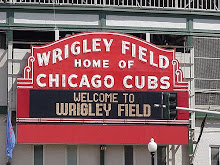2. Braves/Marlins
4. Mets
5. Nats
1). Phillies - Simply put, this is the best team in the NL, as evidence by their World Series appearance last year, and they may have actually improved during the offseason. The Halladay signing puts them above and beyond the rest of the NL should they stay healthy. Trading Cliff Lee was very questionable, as the Halladay/Lee/Hamels triad would be impossible in a playoff series of whatever length. I don't understand the rationale behind that trade; but in the end the Phils got a pitcher who has dominated the toughest division in baseball - the AL East - over the course of his career. Moving to the NL, where most players have never faced him, Halladay could win 25 games this year. Howard, Utley, Ibanez, Rollins, and Victorino will continue to pace one of the best offenses in the game and it's tough to see anybody outclassing this team in the NL East.
2a and 2b). Braves/Marlins - I struggled with differentiating between these two teams, so I took the coward's way out and tagged them as 2a and 2b. These two teams are very, very close in talent and even the managers are similar (Gonzalez was an understudy of Cox). First, the Braves. This is a Braves team where if the bullpen holds up, they would probably win any other division in the NL except for the NL East. Derek Lowe was awful by his standards last year and still managed to win 15 games. Jurrjens, Hanson, and Hudson match up well with almost any other team in the NL except perhaps the Phillies, Giants, healthy Cubs, and Dodgers. Even Kawakami, the 5th starter, posted a very solid 3.86 ERA in 2009. If Wagner falters, Saito, Moylan, and O'Flaherty could all step in ably. While the Vasquez trade was a head-scratcher, recieving Cabrera in return gives the Braves a solid switch-hitter in the middle of the lineup. For the first time in years, this is a Braves squad that isn't built solely around Chipper Jones. While Jones certainly anchors the lineup, McCann, Cabrera, Glaus, and rookie Heyward stack up to make this a balanced and dangerous lineup. If half of the hyperbole around Heyward comes to fruition, then the Braves may have the next Albert Pujols on their hands. This is a team that could push for 92-93 wins.
2b). Marlins - Finally, after two World Series titles and after developing a generation of fine players, the Marlins have sought to sink firm roots in South Florida. With a new stadium on the horizon in 2012, the Marlins locked up once-in-a-generation talent Hanley Ramirez and have a whole stable of other young players ready for 2010. Offensively, this is a dangerous team. Cantu, Uggla, and Ramirez have all proven to be adept power hitters; while young players such as Maybin, Sanchez, and 2009 Rookie of the Year Coghlan round out the lineup with speed, average, and potential power. The pitching staff, if Nolasco bounces back, can certainly compete with Philadelphia and Atlanta. Josh Johnson (also recently signed long-term) is one of the most underrated starters in the NL, and Anibal Sanchez quietly had a very solid year in 2009 despite a 4-8 W/L record. Volstad and Hensley are unproven (Hensley in particular) yet they have the potential for double-digit wins. Florida's weakness may be its bullpen, as Nunez was hardly lights-out in 2009 and it may be interesting at times even getting the ball to Nunez with a lead. However, with the offense Florida possesses they may not need 4 innings of spotless relief. While they don't have the pitching to compete with Philadelphia, should they stay healthy they could give the Braves a serious challenge for the number 2 spot in the NL East.
4). Mets - The major problem with the Mets is health. Reyes' future has been in doubt all spring, and it appears he will start the season on the DL. Bay, Beltran, and Francoeur give the Mets a formidable outfield, yet offseason drama between the Mets and Beltran could prove to be a major distraction as the year wears on (Beltran will also open the season on the DL). Francoeur very quietly had a solid bounceback year in New York, ironically seeming more at ease in New York than in Atlanta. The Mets desperately need David Wright, their leader, to return to form after having a difficult time adjusting to the new Citi Field. The major weakness of the Mets is their starting pitching. After Santana, who has struggled recently with injuries, the rotation is a mess. Pelphrey, Maine, and Perez were all patently awful in 2009 and Perez has spent the spring facing the same control problems he has battled his entire career. The bullpen before K-Rod is unproven at best, and K-Rod may be called on for several multi-inning saves throughout the year. Bottom line, this is not a team that could challenge the Phillies, Braves, or Marlins unless drastic changes are made.
5). Nats - The Nats have quietly started to move their organization in the right direction. The have the beginnings of a potent offense with the additions of Adam Dunn and Josh Willingham alongside vastly underrated Ryan Zimmerman (.292/33/106 in 2009). Nyjer Morgan is a sparkplug, who batted .307 before injuries sidelined him in 2009. Ivan Rodriguez was a great signing to work with a young pitching staff, in particular with phenom Stephen Strasburg. With Strasburg fitting in alongside Jason Marquis (coming off a career year with Colorado) and the solid John Lannan (3.88 ERA in 33 starts in 2009), the Nats suddenly field a solid pitching staff, should Strasburg come anywhere close to realizing his potential. Bruner and Walker are effective relievers, although the Nats lack a strong LHP to help get the ball to closer Matt Capps. Although the Nats won't challenge this year, the pieces are beginning to fall into place for this young team.


No comments:
Post a Comment